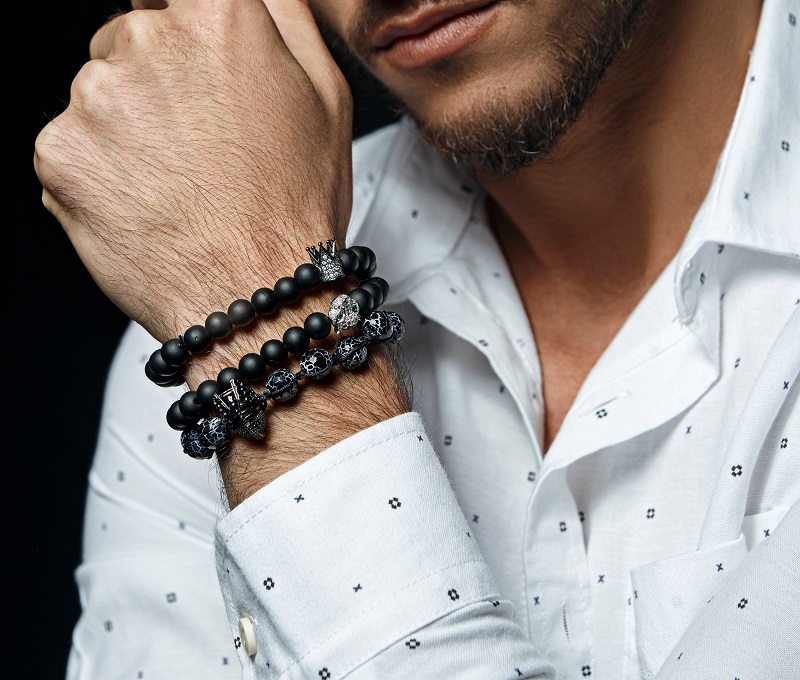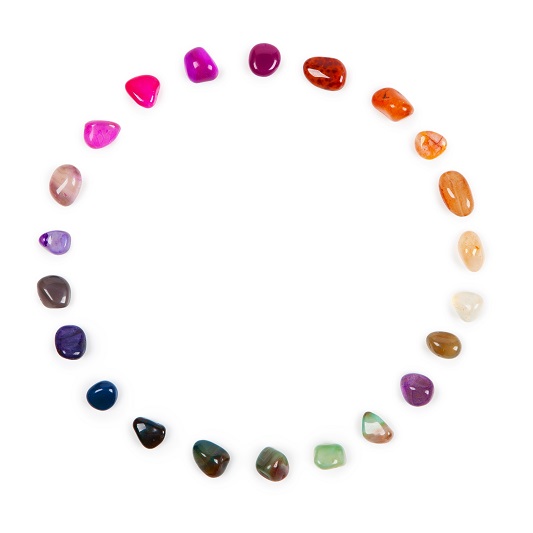Gemstone of the Week: Sapphire

Dior Fine Jewellery
29th September 2017
Halloween, Vampires and Cross Jewellery
6th October 2017A stone renowned for its wisdom and royalty, Sapphire is widely considered the gem of all gems, making its way into the history of almost every religion. Thousands of years ago, deep blue Sapphire was thought to bring protection, spiritual insight, and good fortune to those that possessed it; not only was the precious gemstone seen as being a symbol of power and strength, but also of wise judgment and lifelong kindness. Still, to this day Sapphire is seen as being a stone of wisdom, learning and psychic activation, ideal for those who are seeking the spiritual truth. In this article, we will explore Sapphire in more detail, discussing an array of topics from identification, to the numerous healing properties of the precious gemstone.
How to Identify Sapphire
While traditionally many think of Sapphire as always being blue, the stone is actually any of form of gem-quality corundum, with the only exception being red which falls into the category of Ruby. Barr diamond, true Sapphire is the hardest mineral in the world, measuring a soaring 9 on the Mohs Scale of Hardness. Though the stone has minimal cleavage, it can easily be identified through its exhibition of uneven fracture, flowing over the surface of the gem. Chemically, Sapphire is made up of aluminium oxide, exuding a specific gravity that ranges from 3.95 to 4 depending on the variety of Sapphire. The stupendous durability of the stone makes it easy to distinguish from other gems, despite several similar varieties occurring in the same locations; zircon, spinel, beryl and chrysoberyl are just a couple that holds similar colours and outer appearances.
Different Colours and Types of Sapphire
Due to any variety of gem-quality corundum falling into the category of Sapphire, it’s no surprise that the precious gemstone is available to purchase in a wide variety of colours and varieties. Below, we list just a couple of the most popular types of Sapphire available today, typically being purchased for their ornamental value.
Blue Sapphire Stone
Often being seen as the most beautiful variety of the stone, blue sapphire comes in a wide variety of colour hues, ranging from pale, almost pastel-blue to a vivid deep shade of the colour. While exceptionally pale tones of the stone exist, for a sapphire to be classed as a genuine blue, any other colour present in the stone must not account for over 15% of its overall colouring.
Yellow Sapphire Stone
Also known as Pukhraj, yellow sapphire is thought to be related to Jupiter and it is commonly worn to reap the benefits of the planet. As apparent in the name, the main colour of his variety of sapphire is yellow, with the exact hue ranging from green-toned yellow to more orange-based shades, with vibrant bright yellow being the most favourable. The characteristic yellow colouring is due to small amounts of impure iron being present in the stones chemical make-up.
Colour Changing Sapphire
One of the most valuable, most desirable varieties of natural sapphire is colour changing sapphire. These miraculous stones gained their name after exhibiting an array of changing colours when placed under different light sources. Thought to be caused by the absorption of different wavelengths by the stone, the phenomenon is believed to be the result of trees of vanadium and chromium being present in the chemical make-up.
Pink Sapphire Stone
Seen as being one of the most desirable colours, pink sapphire occurs naturally in an array of different hues of pink, ranging from a pale pink shade to a rich, vibrant magenta. Like every other coloured stone, the colouring of pink sapphire is believed to be caused by traces of impurities within the chemical make up; in this case, those traces are thought to be of chromium. The most valuable pink sapphires are those with the most vivid colouring; meaning that stones with the most chromium present are of the highest value, due to being the most saturated pink colour.
Where is Sapphire Found?
Good quality sapphire is only found in a few locations around the world. The three most popular regions being Kashmir, Burma and Sri Lanka. Since 2007, Madagascar has been leading the world in sapphire production, with Sri Lanka coming in closely behind with its masses of fine, blue gemstones. While sapphire is known to be found in a variety of other locations worldwide, no other countries have produced such good quality stone in a wide variety of colours. Significant deposits of the mineral have been found in Australia and the USA, though these are famous for being dark in colouring – much less favourable than the vibrant hues of the stone located elsewhere.
Healing Properties of Sapphire
The beautiful stone is thought to boast a wide variety of healing properties, of both physical and emotional nature. Excellent for calming the mind, sapphire is a popular choice for those hoping to release mental tension, and rid themselves of unwanted thoughts. Physically, the stone is believed to help restore balance within the body and is commonly used in crystal healing to rebalance one’s flow of chi, helping the body to regain optimum function. Use quality sapphire to ensure focus in repetitive daily tasks, allowing the mind to remain disciplined with a clear vision of the end goal in mind.
In Summary
Whether you are interested in owning sapphire as a piece of high-end jewellery, admiring it for the stupendous variety of vivid hues; or you’re thinking about using the stone for its healing properties to encourage an open mind, full of calm tranquility, the incredible gemstone boasts so many qualities, making it a perfect investment for both gemstone fanatics and novices alike.




